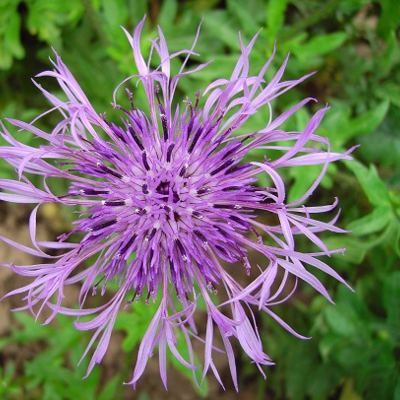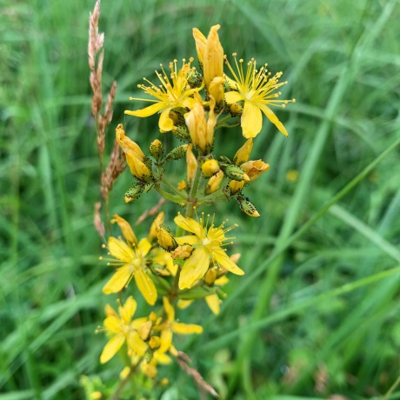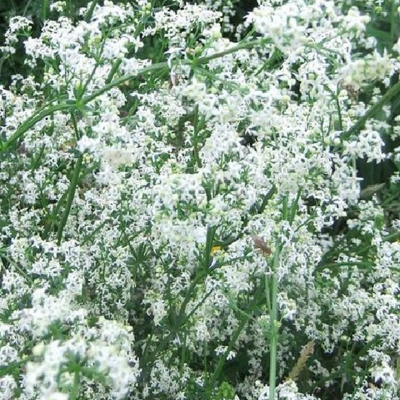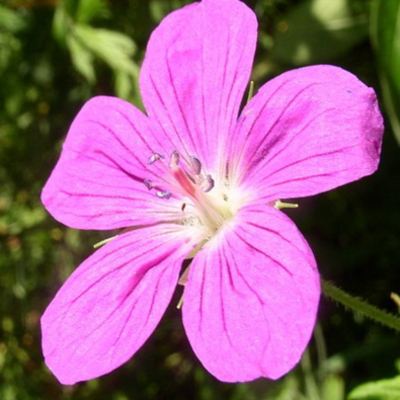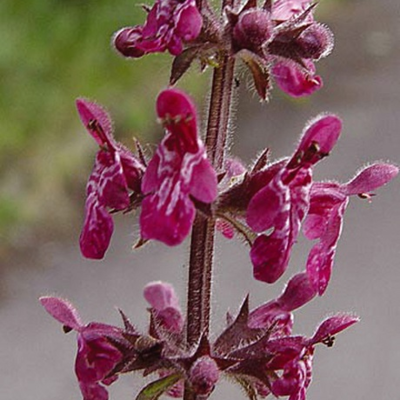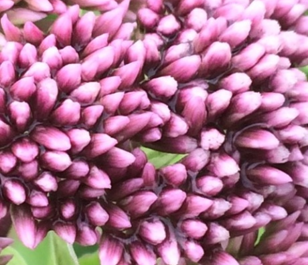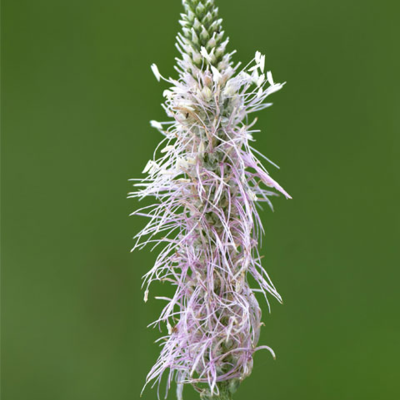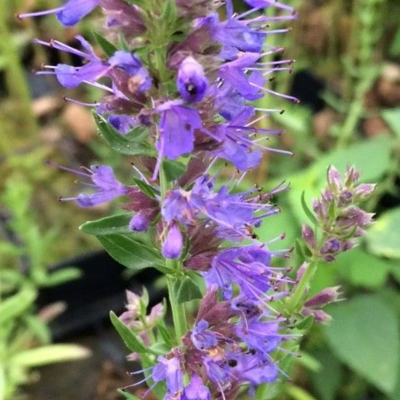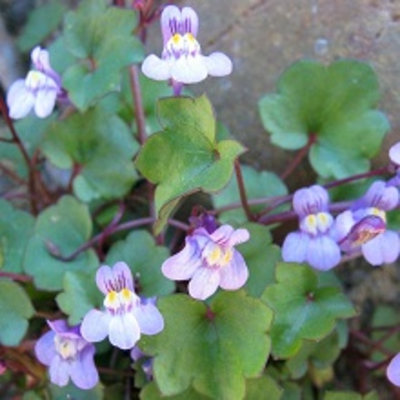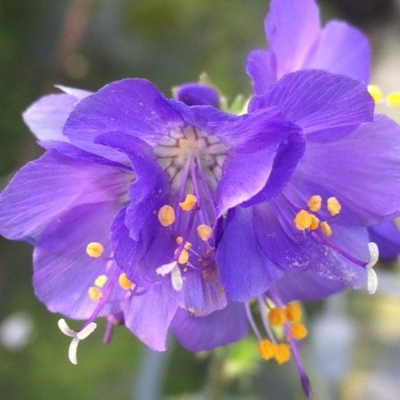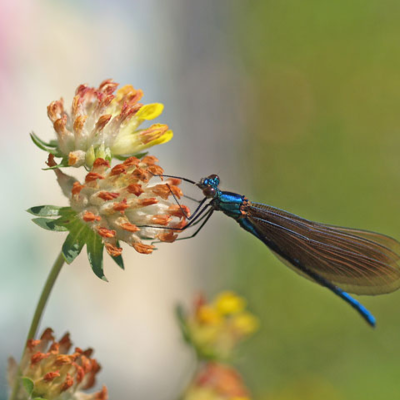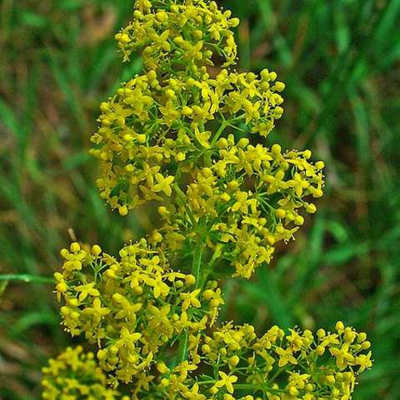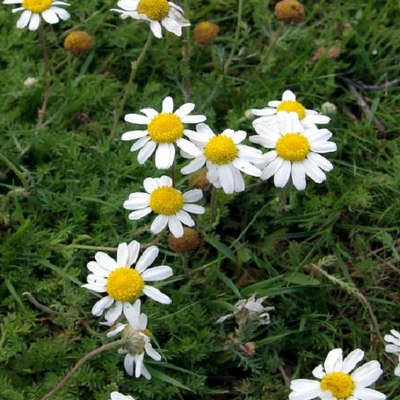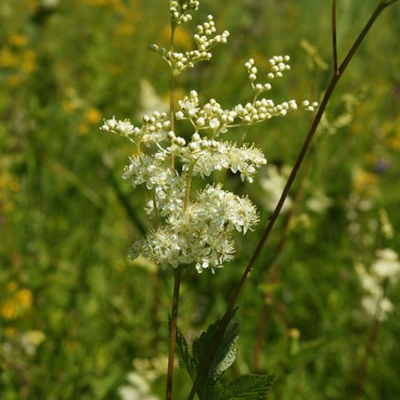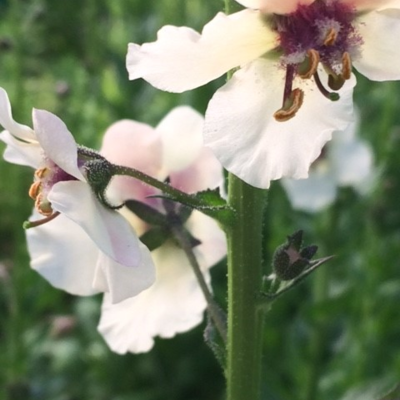Wildflower Plants A to Z
Choose from our entire range of over 100 wildflower plug plants, expertly grown in our very own nursery from high quality, UK native wildflower seed. Our wildflower plugs are ready to be planted straight out into your garden or meadow as soon as they arrive, all year round. Buying individual wildflower plants is one of the best ways to establish your chosen wildflower species, planted individually or as part of a more diverse meadow created from our range of wildflower seeds.
Don't hesitate to get in touch to speak to one of our experts or request a catalogue to view our full range. Ordering regularly or looking for large volumes? Click here to apply for a trade account today - we review all applications within one working day.

Plants for Pollinators highlights plants selected by the RHS as scientifically proven to tackle the declines in bees, butterflies and other pollinators.
Greater Knapweed is hardy and tall-growing, and helps to bring in butterflies. We recommend complimenting its sharp and showy, thistle-like flowers with a similarly starburst-shaped scabious, or use softer shapes to and colours contrast with specimens such as the ox-eye daisy or mallow.
- Type: Perennial
- Height: 40-90cm.
- Flowers: June-September
- Soil Requirement: Well-drained
- Light Requirement: Full sun or partial shade
- Natural Habitat: Grasslands, cliff-sides
- Also known as: Black Top
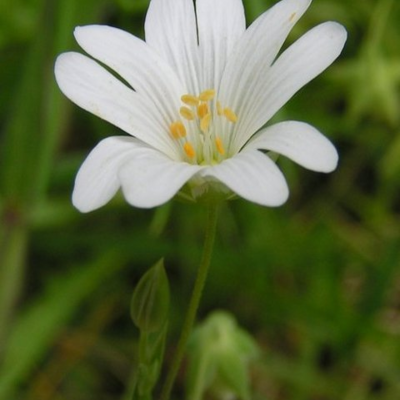

Plants for Pollinators highlights plants selected by the RHS as scientifically proven to tackle the declines in bees, butterflies and other pollinators.
These dainty white springtime flowers are known by a variety of names: one of the most prevalent is ‘Snapdragon’, referring both to its brittle stems and how you may hear its seed pods make a popping sound as they ripen in late Spring. These silvery starbursts are also perfect for pollinators!
- Type: Perennial
- Height: 25-60cm.
- Flowers: April-June
- Soil Requirement: Moist
- Light Requirement: Partial shade
- Natural Habitat: Hedges, banks, wood margins
- Also known as: All-Bone, Easter Bells, Moonflower, Snapdragon
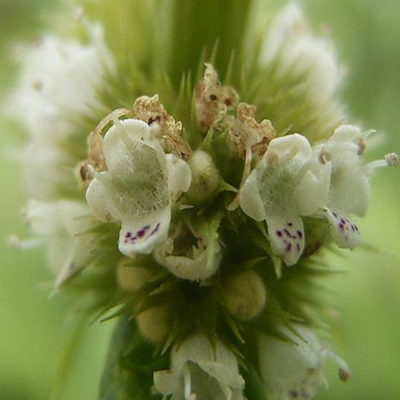

Plants for Pollinators highlights plants selected by the RHS as scientifically proven to tackle the declines in bees, butterflies and other pollinators.
Growing tall with distinct, spear shaped and toothy leaves, this whimsical wetland plant has a softer side in its clustered stems of miniature ivory petals, scarlet-spotted lower lips. An excellent plant for pollinators, and makes for a pretty pondside palette!
- Type: Perennial
- Height: 50-100cm.
- Flowers: July-September
- Soil Requirement: Moist
- Light Requirement: Full sun or partial shade
- Natural Habitat: River banks, stream sides
- Also known as: Bugleweed
Distinguished by its namesake hairy leaves and stem as well as the peppered dark gland across their sepals, this specific specie of St. John’s Wort grows taller and with larger, pale-yellow flowers in clustered spikes. A fickle flower that prefers sunny, calciferous soils unlike the common St. John’s Wort, but a garden or grove decorated with these glorious golden-petalled pillars is a rich enough reward.
- Type: Perennial
- Height: 60-100cm.
- Flowers: July-August
- Soil Requirement: Moist but well-drained
- Light Requirement: Full sun
- Natural Habitat: Open forests, damp grasslands
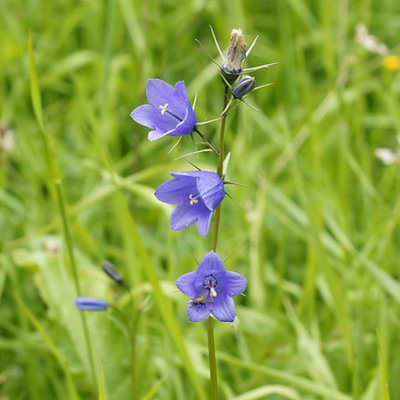

Plants for Pollinators highlights plants selected by the RHS as scientifically proven to tackle the declines in bees, butterflies and other pollinators.
Though dainty by appearance, these papery bells of blue beauty on slender stalks are actually remarkably resilient to the elements, and thus we recommend that you let this well-loved wildflower run through rockeries, and avoid overcrowding them.
- Type: Perennial
- Height: 15-45cm.
- Flowers: June-September
- Soil Requirement: Well-drained, sandy
- Light Requirement: Full sun
- Natural Habitat: Hillsides, coastal areas,
- Also known as: Cuckoo Shoe, Heath Bells, Scottish Bluebell

Plants for Pollinators highlights plants selected by the RHS as scientifically proven to tackle the declines in bees, butterflies and other pollinators.
A rambling, hairless hedge plant, which produces clusters of tiny, star-shaped flowers in fresh white. Noted for its sweet scent, this vigorous wildflower can grow quite tall when clambering alongside hedges and shrubs.
- Type: Perennial
- Height: 30–75cm.
- Flowers: July-August
- Soil Requirement: Well-drained, calcarerous
- Light Requirement: Partial shade
- Natural Habitat: Woodlands, grasslands, hedgebanks
- Also known as: False Baby’s Breath, Whip Tongue, Wild Madder
Hedge Cranesbill is a sublime, showy species of wildflower, its lobed petals a perfect palette of glowing pink and mellow purple, often with darker-coloured veins. This fuchsia firework of a flower is long-flowering and hardy, meaning it’ll grace your garden for a long time.
- Type: Perennial
- Height: 20–45cm.
- Flowers: April-May
- Soil Requirement: Well-drained
- Light Requirement: Partial shade
- Natural Habitat: Meadows, woodlands, road verges
- Also known as: Hedgerow Cranesbill, Mountain Cranesbill
Produces whorls of beetroot-coloured blooms with white markings on a hairy, crimson-tinted stem. As its name may suggest, it used to have uses in herbalism, and in the garden it’s quite popular with pollinators.
- Type: Perennial
- Height: 30-90cm.
- Flowers: June-September
- Soil Requirement: Well-drained
- Light Requirement: Partial shade
- Natural Habitat: Woodlands, scrublands, verges.
- Also known as: Hedge Stachys, Red Archangel
A tall-growing upright marsh flower, which grows plentiful parachutes of pink-and-white florets on red stems, and they’re also known for their pleasant perfume when cut. This whimsically-coloured wildflower is also perfect for pollinators!
- Type: Perennial
- Height: 60–120cm.
- Flowers: July-September
- Soil Requirement: Damp
- Light Requirement: Full sun or partial shade
- Natural Habitat: Marshlands, river banks
- Also known as: Hemlock Parsley, Holy Rope, Raspberries-And-Cream, Water Agrimony
This grass-like plant produces dense spikes of greenish florets, which later display long, lilac stamens that provide this otherwise-prickly plantain with a soft and ribbony appearance. A real gift to your garden that’s perfect for pollinators, and also provides a sweet scent like vanilla. Well-suited to meadows.
- Type: Perennial
- Height: 30-45cm.
- Flowers: May-August
- Soil Requirement: Well-drained, chalky
- Light Requirement: Full sun
- Natural Habitat: Grasslands, pastures, roadsides
- Also known as: Fire Leaves, Healing Herb, Kemps
Hyssop is a herb related to the mint, with aromatic leaves which are sometimes used for flavouring and medicine. It looks just as sweet, producing spikes of petals from vivid violet to royal blue and even white. A delightful bit of eye candy that's also attractive to pollinators and easy to grow.
- Type: Perennial
- Height: 40-60cm.
- Flowers: July-September
- Soil requirement: Moist or well-drained
- Light requirement: Full sun or partial shade
- Natural habitat: Grassland, meadows, roadsides
-
These low, trailing plants are recommended for rockeries, containers or garden walls, where they’re sure to delight with small, snapdragon-like flowers in mauve and yellow. So-named for its ivy-shaped leaves edged with red, there’s a certain magic to these miniature blooms- in bulk, they resemble a whimsical fairy village! A hardy climbing plant for those who want to add a splash of colour to a covered crevice.
- Type: Perennial
- Height: 5-10cm.
- Flowers: June-October
- Soil Requirement: Well-drained
- Light Requirement: Full sun or partial shade
- Natural Habitat: Cliff faces, coastal areas, grasslands
- Also known as: Climbing Sailor, Mother Of Thousands, Oxford Ivy
The county flower of Derbyshire. Jacob's Ladder gets its name from its climbing, ladder-like foliage. Produces lavender blue, bell-shaped flowers form in clusters at the top of its tall, slender stems.
- Type: Perennial
- Height: 50-100cm
- Flowers: June - July
- Soil requirement: Moist but well-drained
- Light requirement: Full sun or partial shade
- Natural habitat: North facing areas, limestone hillsides, old meadows
- Also known as: American Great Valerian, Charity, Ladder to Heaven

Plants for Pollinators highlights plants selected by the RHS as scientifically proven to tackle the declines in bees, butterflies and other pollinators.
Though known for its fuzzy foliage and calyces, this plant's golden globes of florets in a pincushion formation are only the most well known of the Kidney Vetch's fiery potential palette of petals, with some growing in orange, pink or ruby red. These summery, fluffy flowers are also quite long-lived!
- Type: Perennial
- Height: 7–15cm.
- Flowers: May-October
- Soil Requirement: Well-drained, chalky
- Light Requirement: Full sun
- Natural Habitat: Grasslands, verges, coastal areas
- Also known as: Devil’s Claws, Mary’s Fingers, Woundwort

Plants for Pollinators highlights plants selected by the RHS as scientifically proven to tackle the declines in bees, butterflies and other pollinators.
The Lady’s Bedstraw is a hardy, sprawing plant which bears vast whorls and clusters of tiny golden flowers. It also boasts a distinct and sweet scent, even when dried: its unusual name originates from its use to scent bedding in Victorian times.
- Type: Perennial
- Height: 15-30cm.
- Flowers: June-September
- Soil Requirement: Well-drained
- Light Requirement: Full sun or partial shade
- Natural Habitat: Grassy meadows, road verges, clifftops and hills
- Also known as: Maiden’s Hair, Fenwort, Cheese Rennet
This item is currently unavailable
An amazingly aromatic alternative to common grass or daisy lawns, this low-growing, daisy-like flowers make for a pleasing ground cover that is easy to maintain once established, but sensitive to trampling. Plant plugs in full sunlight at least 10cm apart.
- Type: Annual
- Height: 10–20cm.
- Flowers: June-August
- Soil Requirement: Well-drained
- Light Requirement: Full sun
- Natural Habitat: Lawns, grasslands
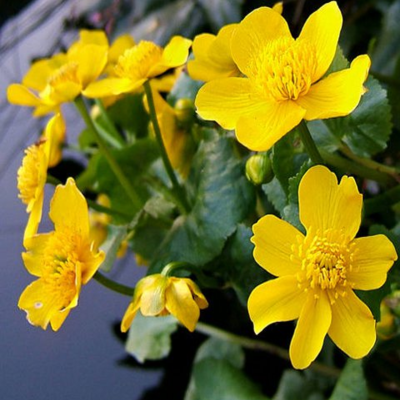

Plants for Pollinators highlights plants selected by the RHS as scientifically proven to tackle the declines in bees, butterflies and other pollinators.
Marigolds are always a lovely choice for the garden- even in loamy soil. The simple-yet-stunning beauty of these clusters of heart-shaped leaves and beaming golden flowers goes without saying- what’s more, they’re hardy, nectar-rich and even considered to be good luck in some parts of the country. Best placed in a sunny spot where they’ll give off a gorgeous glow!
- Type: Perennial
- Height: 25-50cm.
- Flowers: March-August
- Soil Requirement: Moist
- Light Requirement: Full sun
- Natural Habitat: Marshes, coast lines, river banks
- Also known as: Goldings, Kingcup, Publican’s Coat
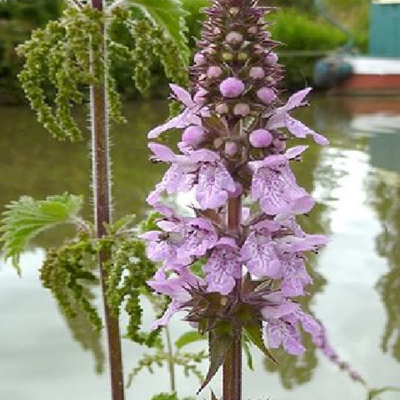

Plants for Pollinators highlights plants selected by the RHS as scientifically proven to tackle the declines in bees, butterflies and other pollinators.
With an array of purple and pink petals which attract bees, few pond-side plants are as pretty as these tall wetland wildflowers growing in whorls. Sports a darker crimson colouration on its lower lip and stem. An earnest plant which multiplies over the years; some might want to keep them in a container, or let them spill in rivers of rich-coloured, robust flowers.
- Type: Perennial
- Height: 30-75cm.
- Flowers: June-September
- Soil Requirement: Moist
- Light Requirement: Full sun or partial shade
- Natural Habitat: River banks, ditches, marshes
- Also known as: Clown’s Woundwort, Marsh Betony, Ploughman’s All-Heal
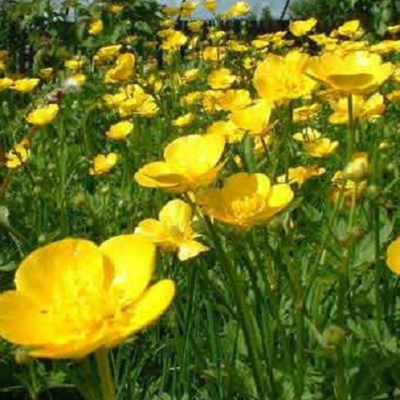

Plants for Pollinators highlights plants selected by the RHS as scientifically proven to tackle the declines in bees, butterflies and other pollinators.
The Meadow Buttercup is the tallest-growing of the buttercups, with a slight preference for damper ground. These bright and buttery, bowl-shaped blooms make an amazing addition to meadows!
- Type: Perennial
- Height: 30–90cm.
- Flowers: May-September
- Soil Requirement: Moist but well-drained
- Light Requirement: Full sun or partial shade
- Natural Habitat: Meadows, grasslands, road verges
- Also known as: Butter Daisy, Goldweed, Meadow Cup
Imagine a midsummer meadow rife with the Meadow Clary’s tall-growing spikes of striking indigo flowers! Though they’re now a rare sight in the wild, this handsome and hardy clump-growing plant is a sight to behold, on its own or at the back of a border. Noted for its soft foliage, which is aromatic when crushed.
- Type: Perennial
- Height: 80–100cm.
- Flowers: May-August
- Soil Requirement: Well-drained
- Light Requirement: Full sun
- Natural Habitat: Dry grassland, hay meadows, grassy paths
- Also known as: Meadow Sage
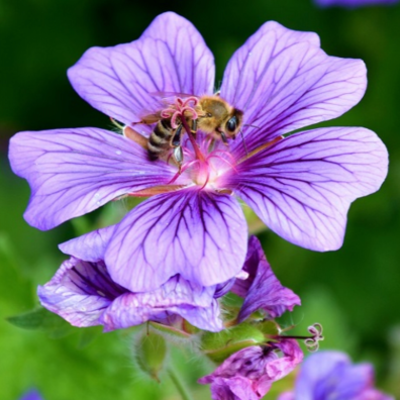

Plants for Pollinators highlights plants selected by the RHS as scientifically proven to tackle the declines in bees, butterflies and other pollinators.
The Meadow Cranesbill gets its name from its attractive, beak-like seed pods, but no bird could match the beauty of this flower's veined violet petals mixed with blue growing in pairs on tall, forked stems. Easy to naturalise and attractive to bees and butterflies, the sky's the limit with this wildflower!
- Type: Perennial
- Height: 60-100cm.
- Flowers: June-September
- Soil Requirement: Well-drained
- Light Requirement: Full sun or partial shade
- Natural Habitat: Meadows, road verges
- Also known as: Crowfoot, Meadow Geranium
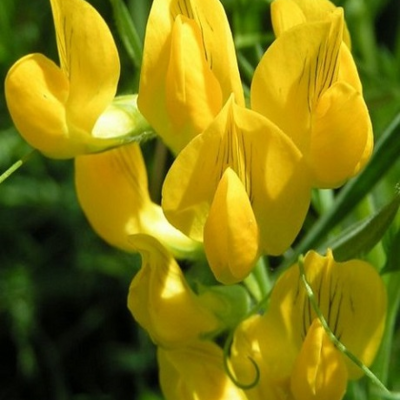

Plants for Pollinators highlights plants selected by the RHS as scientifically proven to tackle the declines in bees, butterflies and other pollinators.
A hardy scrambling wildflower whose bright buttery-yellow, pea-like blooms are well-contrasted by its black ripe seed pods. A magnificent meadow addition which benefits bees and butterflies, and adds a certain shine to shady spots.
- Type: Perennial
- Height: 50-100cm.
- Flowers: May-August
- Soil Requirement: Well-drained
- Light Requirement: Full sun or partial shade
- Natural Habitat: Grassland, roadside verges, waste ground
- Also known as: Angle Berries, Lady’s Fingers, Meadow Pea
The frothy formations of this cream-coloured flower are a truly sugary-sweet sight for the eyes- among other senses, as this tall and robust plant is also renowned for its sweet scent, and it’s frequently used as a flavouring, too. For those caring for marshy meadows, Meadowsweet is a perfect treat!
- Type: Perennial
- Height: 60-120cm.
- Flowers: June-September
- Best Sown: Autumn or Spring
- Soil Requirement: Moist
- Light Requirement: Full sun or partial shade
- Natural Habitat: River banks, damp meadows
- Also known as: Bridewort, Honey-Sweet, Meadow Queen
Growing tall, slender stems with flowers climbing up the stalk, the Moth Mullein’s subtle beauty comes in a variety of colours: petals are often white, tinted with pale pink or lemon yellow. Much like its namesake, it enjoys a place in bright light where its bright blooms can really glow- and it’s not picky about soil conditions, making it ideal for borders or rockeries.
- Type: Biennial
- Height: 60-100cm.
- Flowers: June-September
- Soil Requirement: Well-drained
- Light Requirement: Full sun
- Natural Habitat: Woodland margins, clearings, waste grounds
- Also known as: Shepherd’s Club, Slippery Mullein, Woolly Mullein
Choosing different wildflower plants by species gives you complete control over when you plant them, where you plant them and what the end result will be. And buying wildflower plug plants instead of seeds, means that you don't have to wait for them to germinate - perfect if speed is of the essence!
The full range of over 100 British wildflower plants species from Boston Seeds is available to buy online in trays of 25, 150 and 500 plug plants and all are available with nationwide delivery.
Want to learn more about the likes and dislikes of your favourite wildflower plants? Our handy wildflower species quide will tell you all you need to know - yours to download and keep for FREE.
Buy With Confidence

We’re dedicated to making the highest quality, professional outdoor products available to everyone to truly make the most of their outdoor spaces - lawns, gardens, landscapes, equine, sports and agriculture. Trusted by over 200,000 happy customers with a reputation for professional quality, world-class service and outstanding value for everyone, since 2002.

We take quality seriously, supplying products you can trust. Our grass seed is DEFRA-certified for purity and germination, utilising the highest quality cultivars recommended by the Sports Turf Research Institute. Wildflower products are of known UK provenance and flower bulbs are sourced directly from the finest growers in the UK and the Netherlands.
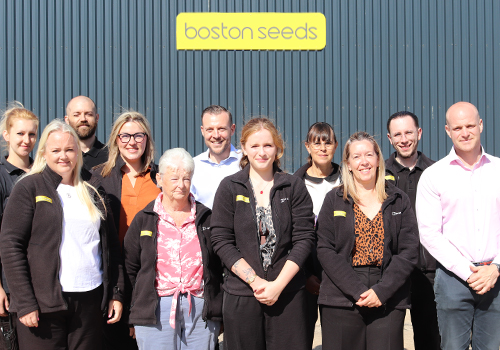
With hundreds of items available for next day delivery, we take pride in getting your order to you quickly and efficiently. Our team of dedicated experts and friendly advisors are here for you when you need them. That’s why you can call us and get straight through to an advisor from 9am-5pm, Monday to Friday, or email us for a rapid response.
